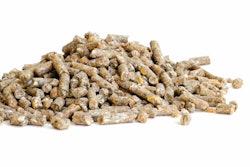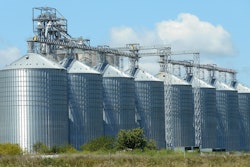
I am involved in an ongoing project where weexport/import sorghumfrom the U.S. into the European Union to run demonstration trials at several countries and different farms for several species. I have also been close to the issues of imported grains in my work; first, as a consultant, and now, as a nutrition supplier. Based on such experiences involving moving grains across the globe to reach their final users, I offer below a brief summary of six important issues that regularly arise.
1. Transportation cost
Imagine you find a grain — in my case sorghum — that is 5 cents/kg cheaper than, say corn. The problem is that this sorghum is in Texas (about 8,000 miles away), whereas the more expensive corn is nearby (just 50 miles down the road). We will assume, here, that quality is similarly excellent and there is at hand a qualified nutritionist to rebalance the diets once the new grain arrives.
Then the question becomes one of transportation cost before anything else can be considered. Can we get this sorghum from Texas to say, Italy, with a cost that is less than 5 cents? At the moment the answer is no, unless you import a huge quantity via a large vessel. And, of course, this is not uncommon for some grains, but rather news for others as the receiving country should have sufficient demand for such grains. But, this is not just the case for cross-ocean transportation.
Farms located near borders often find less expensive cereals just across the border, often from dubious traders (but that is another story). The question becomes one of fuel cost versus distance, assuming truck availability is not a problem. At the end, many potential buyers get disappointed because transportation costs erode any potential savings. Thus, it becomes an issue of securing a better and not less expensive product that can justify paying the extra amount to get quality grains from afar.
2. Carrier selection
这是一个简单的足够的情况下,往往是overlooked. The carrier, be it a ship or a truck, need to have prior experience and the right tools for the job. In other words, they need to know that they transfer sensitive live feed materials and not inactive objects. For example, in vessels that know they transfer grains, they take measures to reduce moisture seepage in and out of grains. Or, that they use clean trucks not previously loaded with materials that could carry over hazardous remains. They also need to know how to load and unload the grains without major wastage and quickly enough because this job is time consuming.
3. Logistics
Sometimes in life doing nothing is easier than trying something new. When it comes to logistics, many not accustomed to this job often raise their hands. Importing goods, especially from a third country can become a nightmare without the help of professionals. This is one of the cases where there should be a sticker saying, “do not attempt at home”. In my case, I was fortunate enough to havepeopleclose by who had plenty of experiences in importing cereals and thus it was a walk in the park. This is, however, seldom the case, so getting everything ready before you decide to buy from abroad is necessary. A good accountant, versatile to this kind of business can save money, time, and effort that cannot be compensated enough!
4. Customs
And, of course, here where most problems can stop even the bravest of the brave. Again, I had the fortune of working with real experts, and at the end what I learned is quite simple, yet effective. Just talk to customs and ask them what kind of paperwork they want, so that when the grains arrive they are satisfied with the documents. In our case, we had them prepare templates of what we were importing and custom clearance was done in no time at all! We just had to make sure sorghum was labelled as feed sorghum and not as food sorghum. Other countries, for example when we sent sorghum to Norway, will have different requirements - for example Salmonella tests, etc. So, check before the grain is still in the seller’s bins!
5. Quality at origin
Sellers abound and agreements can be worth the paper they are written on when a train-load of grain arrives from Ukraine to Spain (another painful experience that I am using just as an example). If the grain arrives at a quality different than the one agreed upon, then it can be difficult to turn it back when it comes in volume. So, checking the quality at origin is a must. Buying from traders without sufficient credentials and without checking the product in person can often result in unpleasant surprises and long-lasting court disputes. And, as the distance gets longer, it becomes rather difficult to prove the product did not deteriorate during transportation and not at origin. Sometimes, buying insurance is the best thing can happen in grains trade.
6. Quality preservation
We arrive at the final point of this discussion that culminates with preservation of quality during transportation. Again, this is the job of the carrier, but in my opinion it is something that all involved parties should play a role. The seller should be aware of the transportation route and possible problems (wet and humid versus hot and dry weather), requirements at the delivery country entry port, etc.
The same is true for the carrier, but it should be the buyer who must make it clear what kind of grain is required, how it should be packaged and transported, and where it will be unloaded and how. If all parties are on board then and only then quality at origin will be retained until the grains reach the farms to be used by our animals.





















